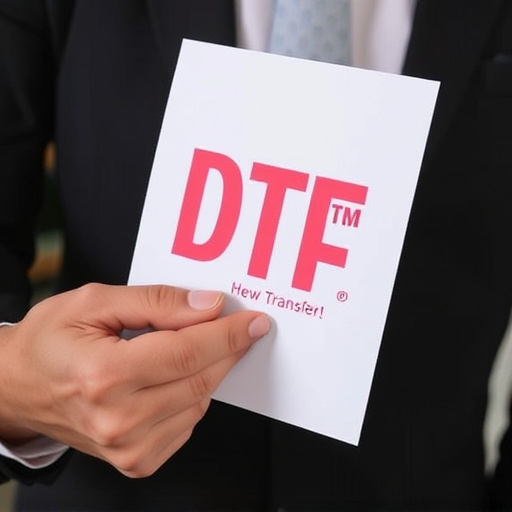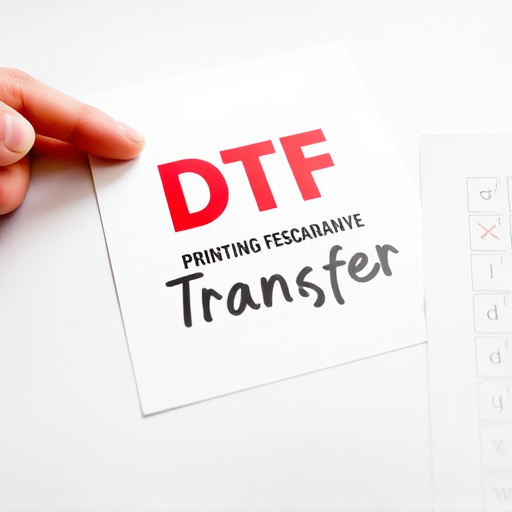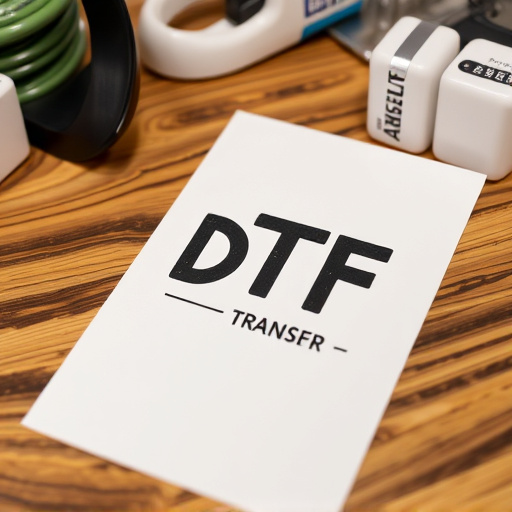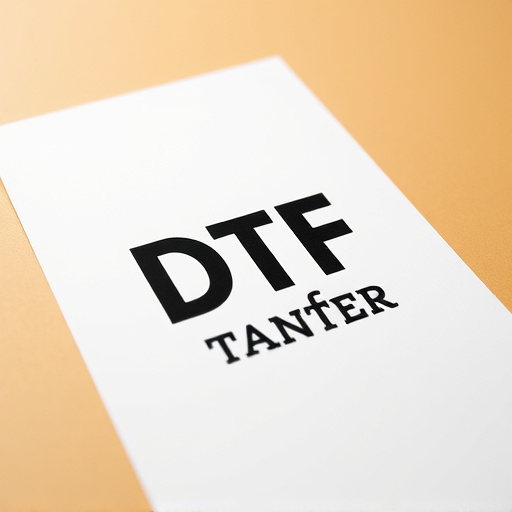Direct-to-Film (DTF) transfer processes require meticulous temperature control between 120-140°F (49-60°C) for superior results, fusing original film emulsion with substrates. This range ensures crisp image transfers and preserves fine details. Optimal preheating (20-25°C/68-77°F) and adherence to manufacturer guidelines prevent distortions, bubbles, or misalignments. Precise temperature control is crucial; overheating damages films while too cool temperatures slow the process. Calibrating equipment based on user manuals and hands-on testing ensures accurate DTF transfers, vital for data preservation and efficient data management strategies.
Discover the ideal temperature settings for successful Digital Transfer (DTF) processes. This comprehensive guide explores the art of applying film transfers, from understanding the DTF process to mastering temperature control. Learn about the perfect temperature range for adhesion and factors that influence these settings. We’ll navigate preheating considerations, common mistakes to avoid, and essential tips for calibrating your equipment, ensuring optimal results in every transfer.
- Understanding DTF Transfer Process
- Ideal Temperature Range for Adhesion
- Factors Influencing Temperature Settings
- Preheating Considerations for Optimal Results
- Avoiding Common Mistakes with Temperature Control
- Tips for Calibrating Your Equipment
Understanding DTF Transfer Process

The Direct-to-Film (DTF) transfer process is a meticulous art that requires precise temperature control for optimal results. This technique involves transferring images or films directly onto a base material, creating a durable and high-quality reproduction. During the DTF transfer, heat plays a pivotal role in fusing the emulsion of the original film with the chosen substrate, ensuring a strong bond.
When conducting a DTF transfer, maintaining a consistent temperature is essential to prevent damage or distortion. The recommended range typically falls between 120-140°F (49-60°C). This temperature window allows for the optimal melting and bonding of the film’s emulsion, resulting in a crisp and clear image transfer. Adjustments may be necessary depending on the specific type of film and substrate being used, emphasizing the importance of understanding the unique properties of each material in the DTF process.
Ideal Temperature Range for Adhesion

The ideal temperature range for achieving optimal adhesion during a Direct-to-Film (DTF) transfer process is between 120°F and 140°F (approximately 49°C to 60°C). This range ensures that the film and the substrate (the material the film is being transferred onto) melt and fuse together effectively, creating a strong bond. Temperatures below this range may result in inadequate adhesion, while exceeding it can cause potential damage to the film or substrate.
Maintaining this temperature spectrum is crucial for preserving the integrity of the film transfer. It allows for a balanced melting process, ensuring that the fine details and textures of the original film are accurately replicated onto the new surface. This precise control over temperature contributes significantly to the overall quality of the DTF transfer, making it a key consideration for enthusiasts and professionals alike in the field of preservation and restoration.
Factors Influencing Temperature Settings

Preheating Considerations for Optimal Results
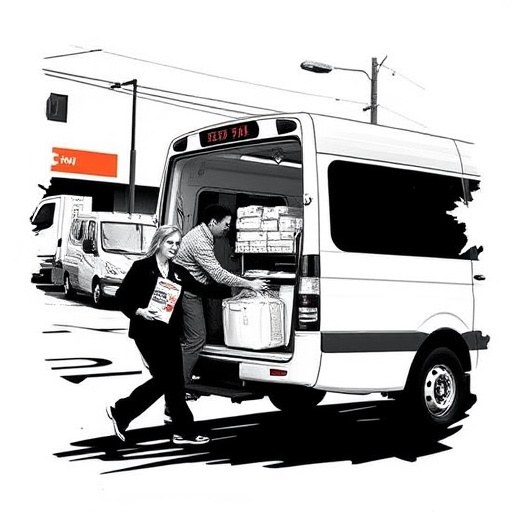
Achieving optimal results with a DTF (Direct-to-Film) transfer heavily relies on preheating considerations. Before applying any film, it’s crucial to allow your work area and equipment to reach the ideal temperature. This ensures the adhesive properties of the transfer are at their peak, leading to a seamless and precise application. Start by heating your workspace to approximately 20-25°C (68-77°F), as this range facilitates the optimal performance of most film adhesives.
Additionally, preheat your film transfers themselves according to the manufacturer’s guidelines. Many professional-grade DTF films recommend a specific temperature and time for warming before use. This step is essential for achieving crisp, clear images without bubbles or misalignments. Remember, consistent and accurate temperature control is key to successful DTF transfers, ensuring both the longevity of your work and the preservation of original textures and colors.
Avoiding Common Mistakes with Temperature Control
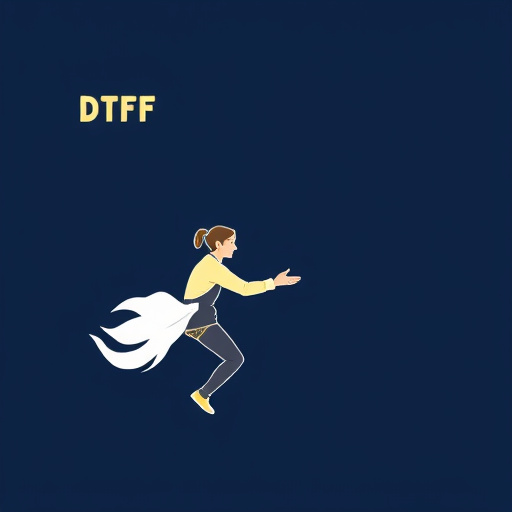
When applying film transfers, such as DTF (Direct-to-Film) Transfers, maintaining accurate temperature control is paramount to achieving optimal results. One of the most common mistakes users make is deviating significantly from recommended temperature settings. Overheating can cause unwanted distortions and even damage the film, leading to blurry images or color shifts. Conversely, too cool temperatures may slow down the transfer process or result in incomplete bonding between the film and the substrate.
To avoid these pitfalls, it’s crucial to adhere strictly to the temperature guidelines provided by the manufacturer. Using a precise thermometer ensures you’re monitoring the temperature accurately. Additionally, allowing adequate time for heating and cooling helps prevent sudden thermal shocks that can negatively impact the transfer quality. This meticulous approach guarantees a crisp, clear DTF Transfer, preserving the film’s original integrity.
Tips for Calibrating Your Equipment

Calibrating your equipment is a crucial step in achieving precise temperature settings for film transfers, such as DTF (Direct to Film) Transfers. Start by consulting your device’s user manual, which should provide guidelines specific to your equipment. These manuals often offer valuable insights into optimal temperature ranges and calibration techniques.
Next, invest time in testing and adjusting your settings. Preheat your transfer apparatus to different temperatures within the recommended range and observe the results. Note any visible changes in the film’s quality, including color accuracy, detail retention, and overall aesthetics. This hands-on approach will help you fine-tune your equipment, ensuring optimal conditions for successful DTF transfers.

